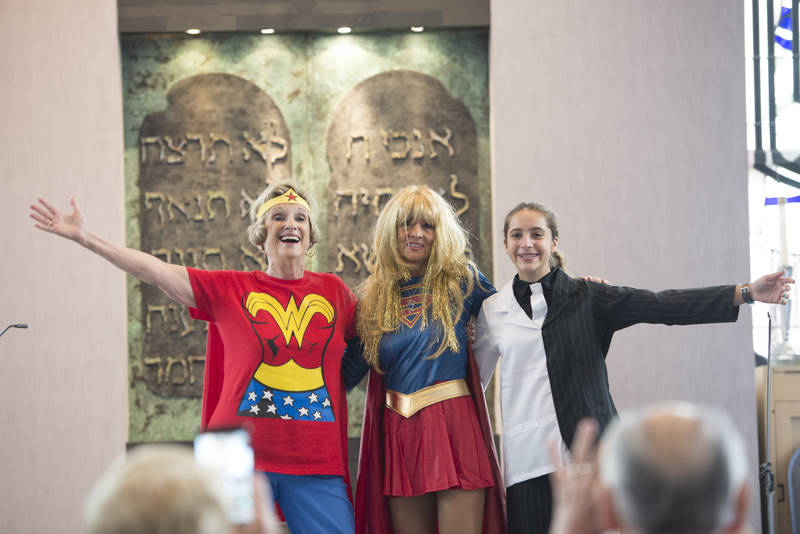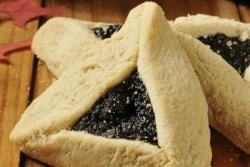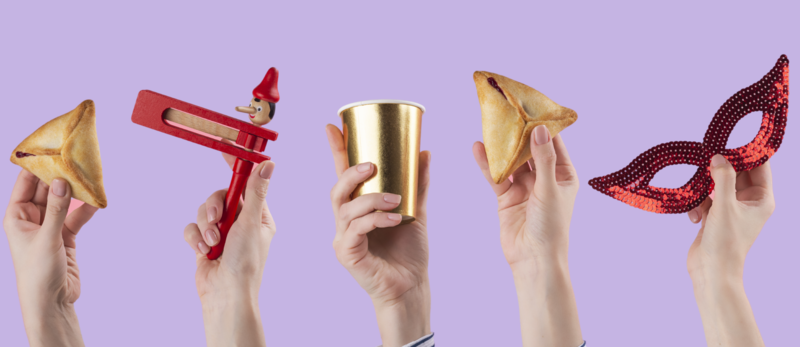Purim is certainly full of fun, with festivities involving costumes, skits and songs, noisemakers, and food gifts!
Purim is a joyful holiday that honors and affirms Jewish survival and resilience throughout history.
The main communal event consists of a public reading of the Book of Esther (M'gillat Esther), which relates the story of the holiday: Under King Ahashverosh's reign, Haman, the king's adviser, plans the extermination of all Jews in Persia.
His plot is thwarted by Queen Esther and her cousin Mordechai, who eventually rescue the Jews of Persia from annihilation.
The m'gillah reading is usually a rowdy affair, punctuated by booing and noise-making as Haman's name is read aloud.
Purim is an unusual holiday in many respects. First, Esther is the only biblical book in which God is not mentioned. Second, Purim, like Hanukkah, is viewed as a minor festival according to Jewish custom, but has been elevated to a major holiday as a result of the Jewish historical experience. Over the centuries, Haman has come to symbolize every anti-Semite in every land where Jews were oppressed. The significance of Purim lies not so much in how it began, but in what it has become: a thankful and joyous affirmation of Jewish survival.
In the Book of Esther, we read that Purim is a time for "feasting and merrymaking," as well as for "sending gifts to one another and presents to the poor" (Esther 9:22). In addition to reading the M'gillah (Book of Esther), celebrants dress in costumes, have festive parties, perform , send baskets of food (mishloach manot) to friends, and give gifts to the poor (matanot l'evyonim).
CELEBRATE AT TEMPLE SHALOM
Unless otherwise noted, all services take place at Temple Shalom.
Livestreaming will be available for all services held in the Sanctuary.
Purim - March 23-24, 2024 - Megillah reading 10:30am, Shpiel 11:00am
Food Truck Purim Palooza- March 24, 2024 - 12:00pm
Costumes

At Temple Shalom, our annual Purim shpiel (play) at the Food Truck Purim Palooza is full of lively, fun costumes, both from the performers as well as the audience.
As part of the carnival-like atmosphere of Purim, many children and adults wear costumes. Some attribute this tradition to the fact that Esther initially “masked” her Jewish identity. Now a vibrant and widely practiced custom, some choose to dress as characters from the Purim story, while others select Jewish heroes from throughout history.
CELEBRATE AT HOME
There are many fun Purim activities to help get excited about the holiday. Exchanging mishloach manot or baking hamantashen are traditional, or you could just prepare your Purim costume!

Mishloach manot are gifts of food that friends (and prospective new friends!) exchange on Purim. Often presented in baskets, most mishloach manot include hamantashen, the traditional three-sided pastry eaten on Purim, but may also include a wide variety of foods and treats. These gifts are frequently referred to by their Yiddish name, shalachmanos.
Jewish families make mishloach manot baskets at home and distribute then to friends. Many families also make hamantashen to include in these baskets and to enjoy at home. Check out these creative ideas for making your own.

Hamantashen (Yiddish for Haman's pockets) are three-cornered pastries filled with poppy seeds (mohn in Yiddish), fruit preserves, chocolate, or other ingredients that are traditionally eaten on Purim. In Israel during the weeks leading up to Purim, the aroma of freshly baked hamantashen can be smelled on every block. Their triangular shape is thought to be be reminiscent of Haman's hat or ears..
- Try this recipe for
-
Hamantashen
- by Joan Nathan








